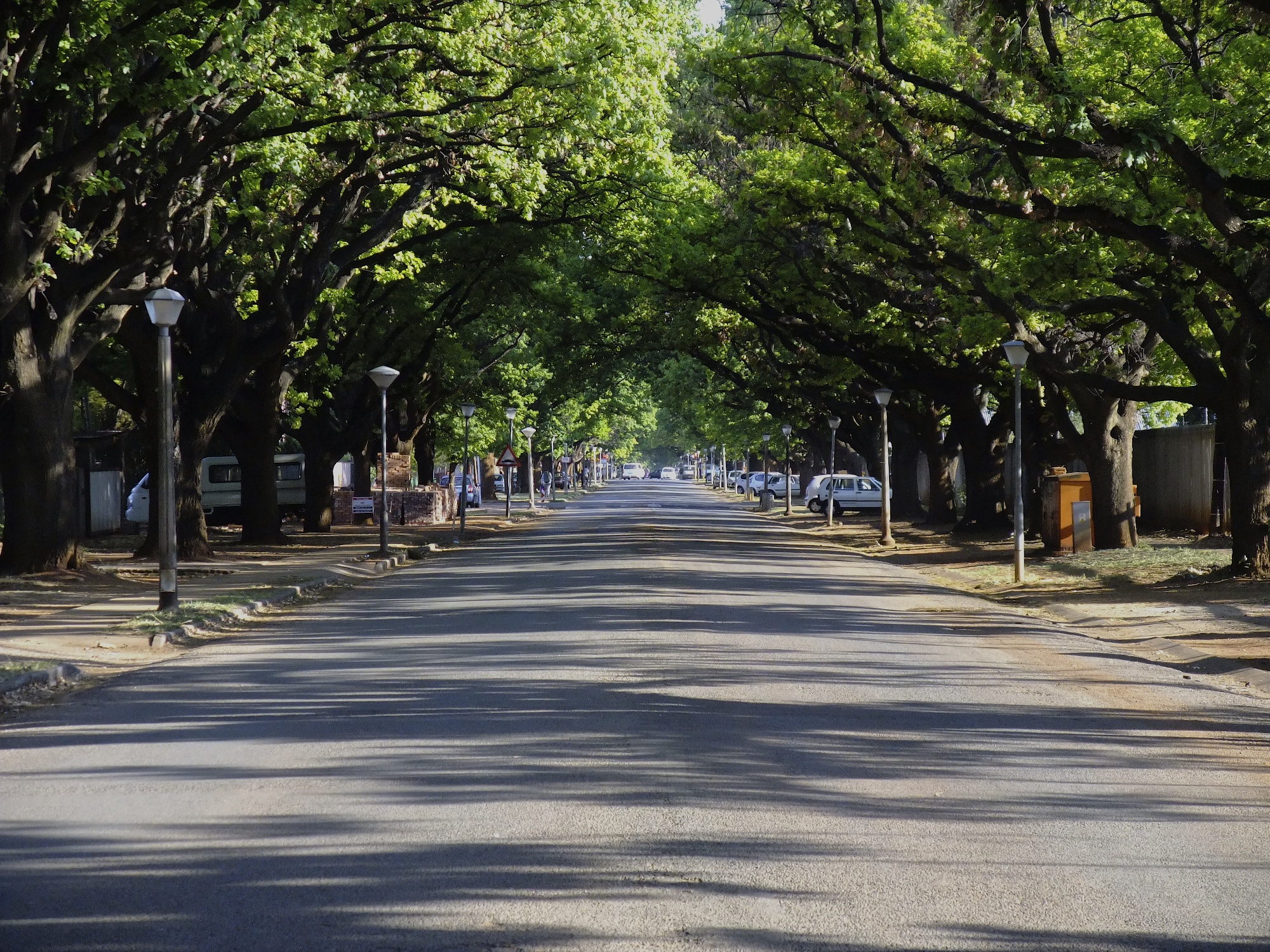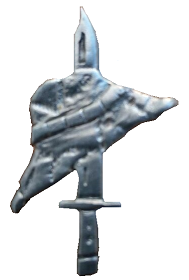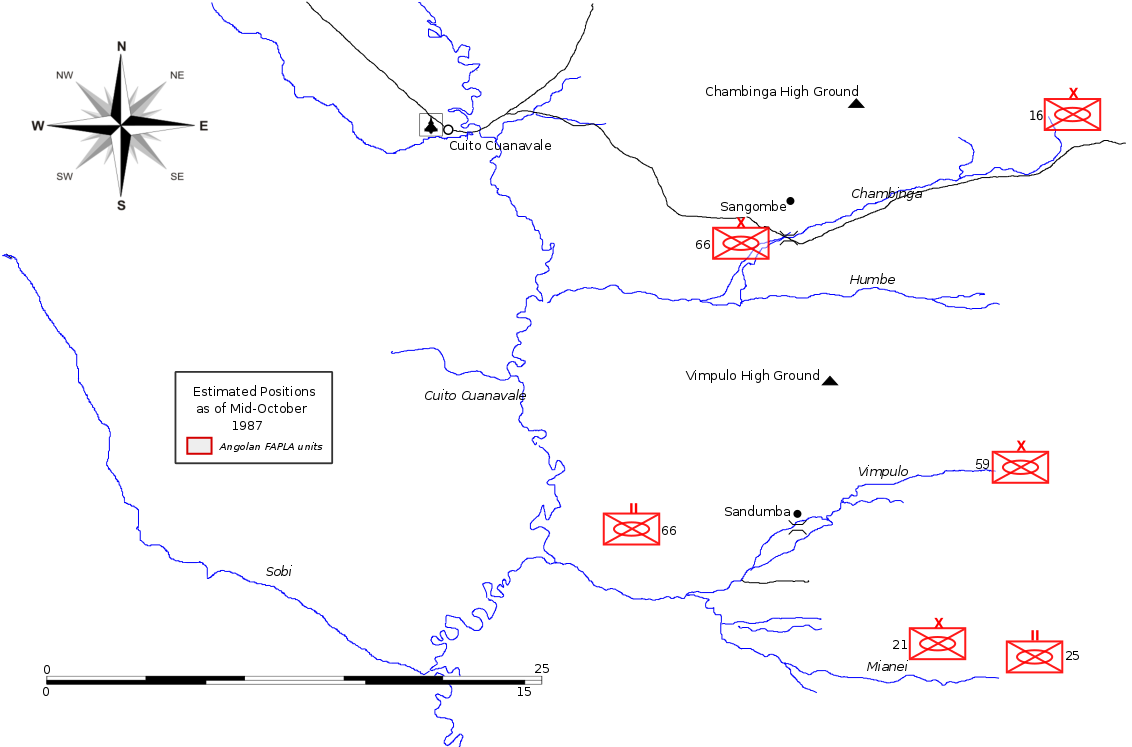|
4 Artillery Regiment
4 Artillery Regiment is based at Potchefstroom, responsible for the training of soldiers allotted to Field and Medium Artillery. History Origins Under the UDF On May 28, 1945, authority was granted for the formation of 4 Field Artillery as a full-time regiment with effect 1 April 1945. =Successor to 4 Field Brigade= 4 Artillery was the successor to 4 Field Brigade, which had made a name for itself at Combolcia, Dessie and Amba Alagi in Ethiopia. The regiment served at El Alamein under its own name – as part of 1 SA Division – and in Italy as part of 6 SA Armoured Division, notably at Monte Stanco. In May 1946 the unit became part of the Permanent Force's 11 Armoured Brigade. When the latter was disbanded in 1951, the unit continued on as 10 Field Battery. =4 Field Training Regiment= Based in Potchefstroom, it became 4 Field Training Regiment in 1953 with 10, 11 and 12 Field Batteries at Potchefstroom, Bloemfontein and Oudtshoorn respectively. It was disestablished a ... [...More Info...] [...Related Items...] OR: [Wikipedia] [Google] [Baidu] |
South African Army Artillery Formation
The South African Army Artillery Formation is the controlling entity of all South African Army artillery units. It draws much of its history from the South African Artillery, established in 1934 but with roots that reach back to 1921. The formation consists of both regular and reserve units. There is a separate South African Army Air Defence Artillery Formation that directs army anti-aircraft warfare units. History Origins The South African Permanent Force, created in 1913 as the Permanent Force and re-designated with effect from 23 February 1923, included the South African Field Artillery (SAFA), and the South African Permanent Garrison Artillery (SAPGA). The SAPGA had begun operations some time before, when the coastal defences of the Cape Peninsula (manned by the Cape Garrison Artillery) had been handed over to South Africa in December 1921. In Proclamation No. 246 of 1934, the Governor General of the Union of South Africa merged the two organisations with effect from 1 Septe ... [...More Info...] [...Related Items...] OR: [Wikipedia] [Google] [Baidu] |
Potchefstroom
Potchefstroom (, colloquially known as Potch) is an academic city in the North West Province of South Africa. It hosts the Potchefstroom Campus of the North-West University. Potchefstroom is on the Mooi Rivier (Afrikaans for "pretty river"), roughly west-southwest of Johannesburg and east-northeast of Klerksdorp. Etymology Several theories exist about the origin of the city's name. According to one theory, it originates from ''Potgieter'' + ''Chef'' + ''stroom'' (referring to Voortrekker leader and town founder Andries Potgieter; "chef" indicates the leader of the Voortrekkers, and "stroom" refers to the Mooi River). Geoffrey Jenkins writes, "Others however, attribute the name as having come from the word 'Potscherf', meaning a shard of a broken pot, due to the cracks that appear in the soil of the Mooi River Valley during drought resembling a broken pot". M. L. Fick suggests that Potchefstroom developed from the abbreviation of "Potgieterstroom" to "Potgerstroom", whic ... [...More Info...] [...Related Items...] OR: [Wikipedia] [Google] [Baidu] |
Tembisa
Thembisa, formerly Tembisa (Dindela), is a large township situated to the north of Kempton Park on the East Rand, Gauteng, South Africa. It was established in 1957 when black people were resettled from Alexandra and other areas in Edenvale, Kempton Park, Midrand and Germiston. History The township was founded in 1957. After the Afrikaner-dominated National Party gained power in 1948 and began to implement apartheid, the pace of forced removals and the creation of townships outside legally designated white areas increased. The Johannesburg council established new townships for black people evicted from the city's freehold areas. In 1956, townships were laid out for particular ethnic groups as part of the state's strategy to sift black people into groupings that would later form the building blocks of the so-called "independent homelands". It is the second largest township in Gauteng, following Soweto. In 1977 the government initiated the Community Councils and in 1982 upgrade ... [...More Info...] [...Related Items...] OR: [Wikipedia] [Google] [Baidu] |
Soweto
Soweto () is a township of the City of Johannesburg Metropolitan Municipality in Gauteng, South Africa, bordering the city's mining belt in the south. Its name is an English syllabic abbreviation for ''South Western Townships''. Formerly a separate municipality, it is now incorporated in the City of Johannesburg Metropolitan Municipality, and one of the suburbs of Johannesburg. History George Harrison and George Walker are today credited as the men who discovered an outcrop of the Main Reef of gold on the farm Langlaagte in February 1886. The fledgling town of Johannesburg was laid out on a triangular wedge of "uitvalgrond" (area excluded when the farms were surveyed) named Randjeslaagte, situated between the farms Doornfontein to the east, Braamfontein to the west and Turffontein to the south. Within a decade of the discovery of gold in Johannesburg, 100,000 people flocked to this part of the Zuid-Afrikaansche Republiek in search of riches. They were of many races and na ... [...More Info...] [...Related Items...] OR: [Wikipedia] [Google] [Baidu] |
SADF Merlyn Forces Emblem 1989 South West Africa
The South African Defence Force (SADF) (Afrikaans: ''Suid-Afrikaanse Weermag'') comprised the armed forces of South Africa from 1957 until 1994. Shortly before the state reconstituted itself as a republic in 1961, the former Union Defence Force was officially succeeded by the SADF, which was established by the Defence Act (No. 44) of 1957. The SADF, in turn, was superseded by the South African National Defence Force in 1994. Mission and structure The SADF was organised to perform a dual mission: to counter possible insurgency in all forms, and to maintain a conventional military arm which could defend the republic's borders, making retaliatory strikes as necessary. As the military expanded during the 1970s, the SADF general staff was organised into six sections—finance, intelligence, logistics, operations, personnel, and planning; uniquely, the South African Medical Service (SAMS) was made co-equal with the South African Army, the South African Navy and the South African A ... [...More Info...] [...Related Items...] OR: [Wikipedia] [Google] [Baidu] |
Grootfontein
, nickname = , settlement_type = City , motto = Fons Vitæ , image_skyline = Grootfontein grass.jpg , imagesize = 300px , image_caption = , image_flag = , flag_size = , image_seal = , seal_size = , image_shield = Grootfontein COA.svg , shield_size = 200px , image_blank_emblem = , blank_emblem_type = , blank_emblem_size = , image_map = , mapsize = , map_caption = , pushpin_map = Namibia , pushpin_label_position = bottom , pushpin_mapsize = 300 , pushpin_map_caption = Location in Namibia , subdivision_type = Country , subdivision_name = , subdivision_type1 = Region , subdivision_name1 = Otjozondjupa Region , subdivision_type2 = Constituency , subdivision_name2 = Grootfontein constituency , subdivision_type3 = , subdivision_na ... [...More Info...] [...Related Items...] OR: [Wikipedia] [Google] [Baidu] |
Operation Prone
Operation Prone was a proposed military operation by the South African Defence Force (SADF) and South West African Territorial Force (SWATF) during the South African Border War and Angolan Civil War between May and September 1988. With the advance of the 50th Cuban Division towards Calueque and the South-West Africa border, the SADF formed the 10 SA Division to counter this threat. The plan for Operation Prone had two phases. Operation Linger was to be a counterinsurgency phase and Operation Pact a conventional phase. Background and threat assessment Caught off guard by the rapid movement southwards by the Cuban 10th Division, whose appearance was first noticed during April/May 1988 when SADF units in south-western Angola started to come into contact with advancing Cuban/FAPLA units, serious planning began. Initially, the plans were developed as a proposed attack on the Cuban/FAPLA forces in south-western Angola but as events played out and peace talks developed, the plan evolve ... [...More Info...] [...Related Items...] OR: [Wikipedia] [Google] [Baidu] |
Operation Displace
Operation Displace was a military operation by the South African Defence Force during the South African Border War and Angolan Civil War. It involved maintaining the illusion that the SADF had remained in brigade strength east of Cuito Cuanavale at the end of April 1988 and the eventual withdrawal of all South African military units from south-eastern Angola during August 1988. Background Following the end of fighting on 27 June 1988 around Techipa and Calueque, also known as Operation Excite/Hilti, an undeclared ceasefire came into being. The Americans under Chester Crocker, eager to prevent further fighting, negotiated a third round of talks in New York City to begin on 10 July. With Soviet assistance, the Cuban delegation returned with a less belligerent leader who proposed to the South Africans a Cuban withdrawal linked with the implementation of UN Resolution 435. This new concession came after seven years of rejecting that position. The talks ended on 13 July 1988, resu ... [...More Info...] [...Related Items...] OR: [Wikipedia] [Google] [Baidu] |
Operation Hooper
Operation Hooper was a military operation in 1987-88 by the South African Defence Force (SADF) during the South African Border War. This operation forms part of what has come to be called the Battle of Cuito Cuanavale. The Cubans' objective was securing the town of Cuito Cuanavale on the west of the river from capture. The SADF objective was to drive the People's Armed Forces for the Liberation of Angola (FAPLA) west across the river or to destroy them, so as to ensure that FAPLA was no longer a threat to the National Union for the Total Independence of Angola (UNITA) in the south-east. The FAPLA advance was permanently halted, UNITA lived to fight on for another 15 years. The SADF never attempted to capture the town. Both sides claimed victory. Background Directly following on from Operation Moduler, by November 1987 the SADF had cornered the remnants of three FAPLA units on the east of the Cuito River, across from the town itself and was poised to destroy them. Gleijeses (2007) T ... [...More Info...] [...Related Items...] OR: [Wikipedia] [Google] [Baidu] |
Operation Moduler
Operation Moduler (sometimes incorrectly called "Modular") was a military operation by the South African Defence Force (SADF) during the South African Border War. It formed part of what has come to be called the Battle of Cuito Cuanavale. The Angolan objective was to advance south-east to attack the UNITA (National Union for the Total Independence of Angola) at Mavinga. The SADF objective was to protect UNITA by stopping that advance. The advance was halted with heavy Angolan casualties. The South African forces and its UNITA allies then began offensive operations against the Angolan forces, who had retreated back to a defensive line east of the Cuito River with the objective of destroying them once and for all. Background During January 1987, the Angolans began to increase their air defence network in the Cuito Cuanavale region and by April they had begun to assemble a large force of tanks, APCs, trucks and a large number of helicopters and fighter and strike aircraft at the tow ... [...More Info...] [...Related Items...] OR: [Wikipedia] [Google] [Baidu] |
10 Artillery Brigade (South Africa)
10 Artillery Brigade was a South African Defence Force formation designed for mass artillery barrages, mainly for the 7th South African Infantry Division or 8th South African Armoured Division, as well as an ad hoc formation during Operation Prone, when needed and detached and reattached where required. Smaller components would then be used at the battlegroup level. History 10 Artillery Brigade was formed in Potchefstroom in 1983, when 4 Field Regiment and 14 Field Regiment were both incorporated as 4 Artillery Regiment and 14 Field Artillery Regiment. 4 Artillery Regiment was located to the old 14 Field Regiment base where the Brigade was established. It provided the base and training facilities as well as National Servicemen gunner training between each regiment on an annual basis. Equipment The Brigade utilized the following equipment: * G5 155mm long range howitzer * G6 155mm long range howitzer * G2 140mm medium range howitzer * Bateleur 127mm multiple rocket launch ... [...More Info...] [...Related Items...] OR: [Wikipedia] [Google] [Baidu] |
Operation Protea
Operation Protea was a military operation during the South African Border War and Angolan Civil War in which South African Defence Forces (SADF) destroyed a number of South West Africa People's Organisation (SWAPO) bases in Angola. During the operation, which took place from 23 August to 4 September 1981, up to 5,000 SADF soldiers occupied Cunene province, Angola. Planning Operation Protea was launched on 23 August 1981. Its objectives were to destroy the SWAPO command and training centre at Xangongo and its logistic bases at Xangongo and Ongiva. Xangongo, located at was the headquarters of SWAPO's "north-western front" from where it directed SWAPO units operating primarily in the Kaokoland and in western and central Ovamboland. There were also other SWAPO bases, which were used as supply depots and training bases for SWAPO recruits, sited to the south and southeast of the town. Ongiva, a town located less than fifty kilometres north of the Angola-South West Africa border ... [...More Info...] [...Related Items...] OR: [Wikipedia] [Google] [Baidu] |



.jpg)




